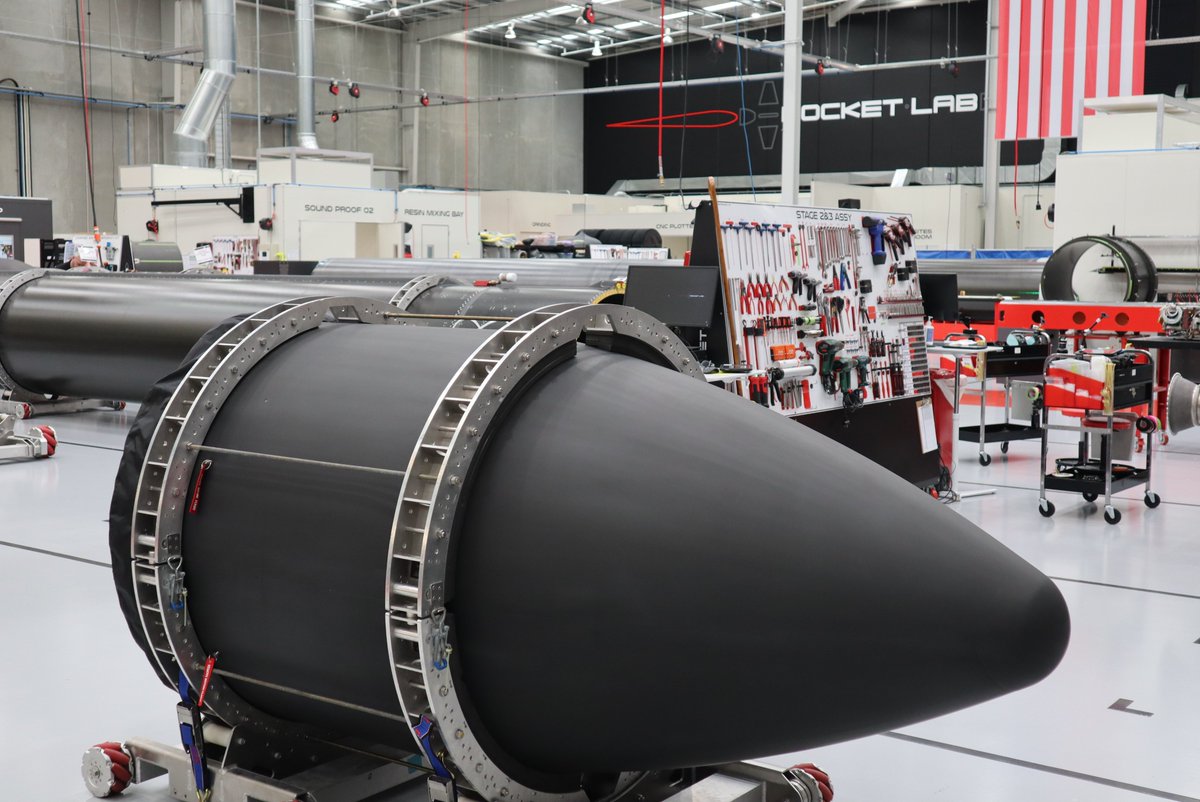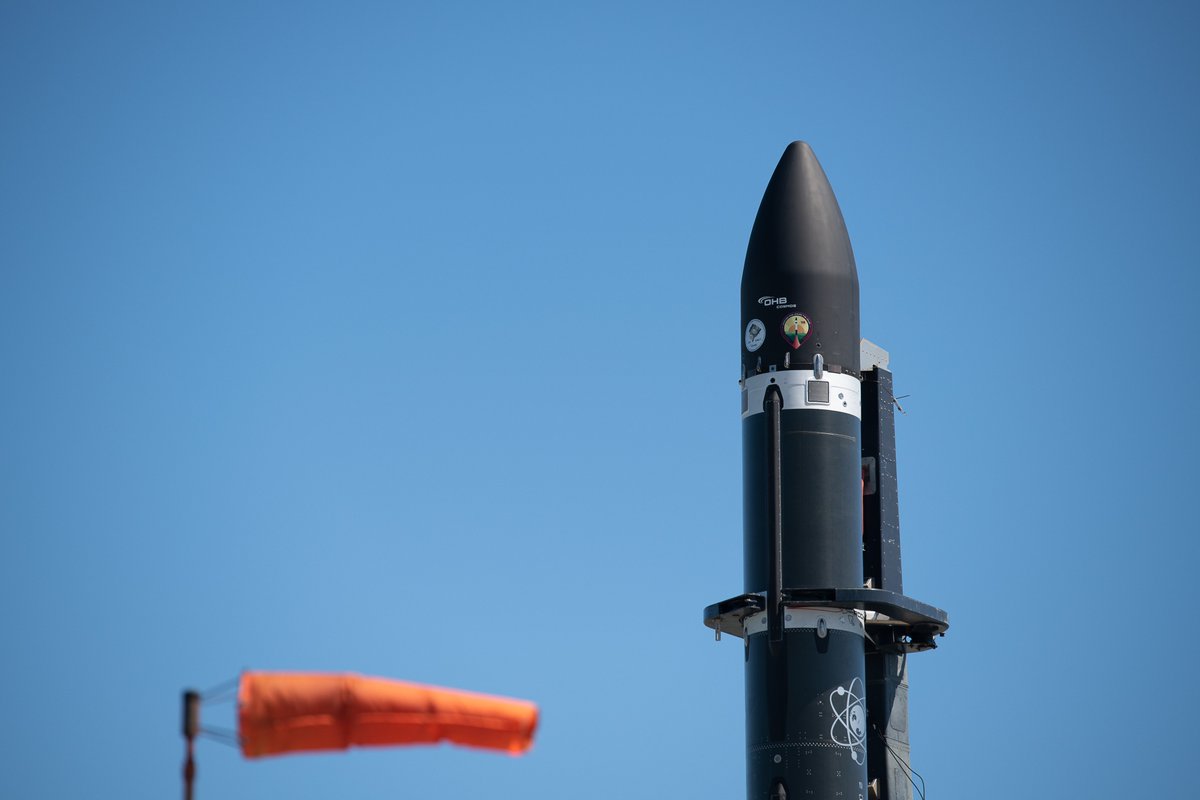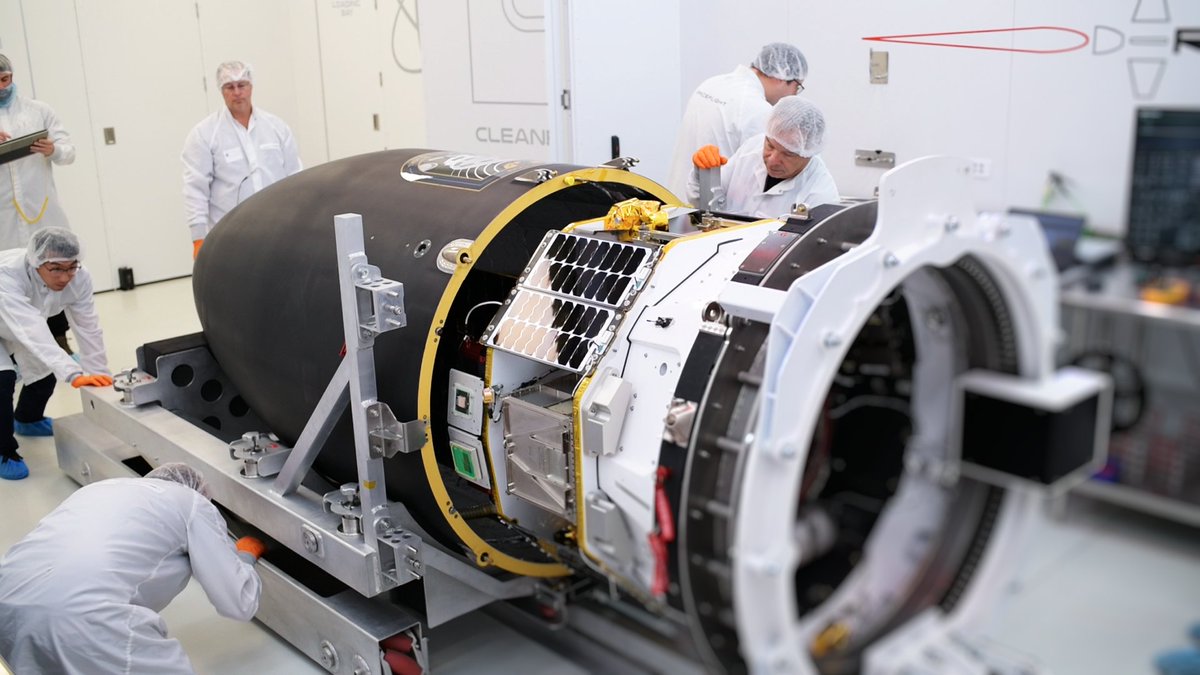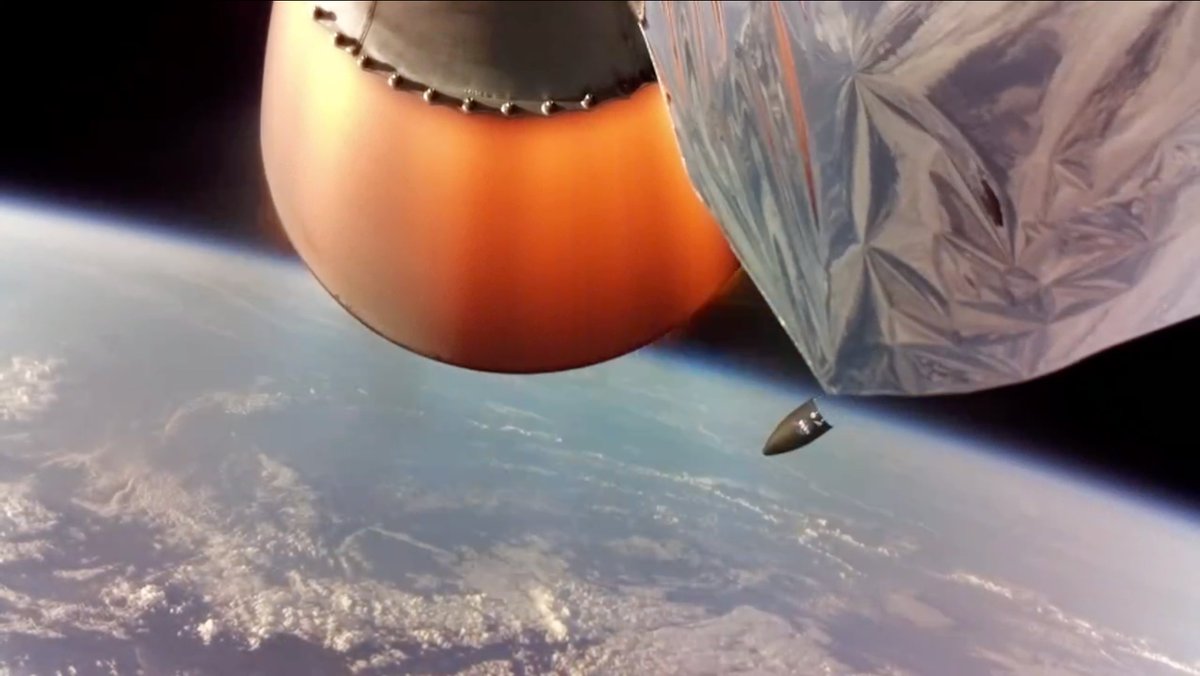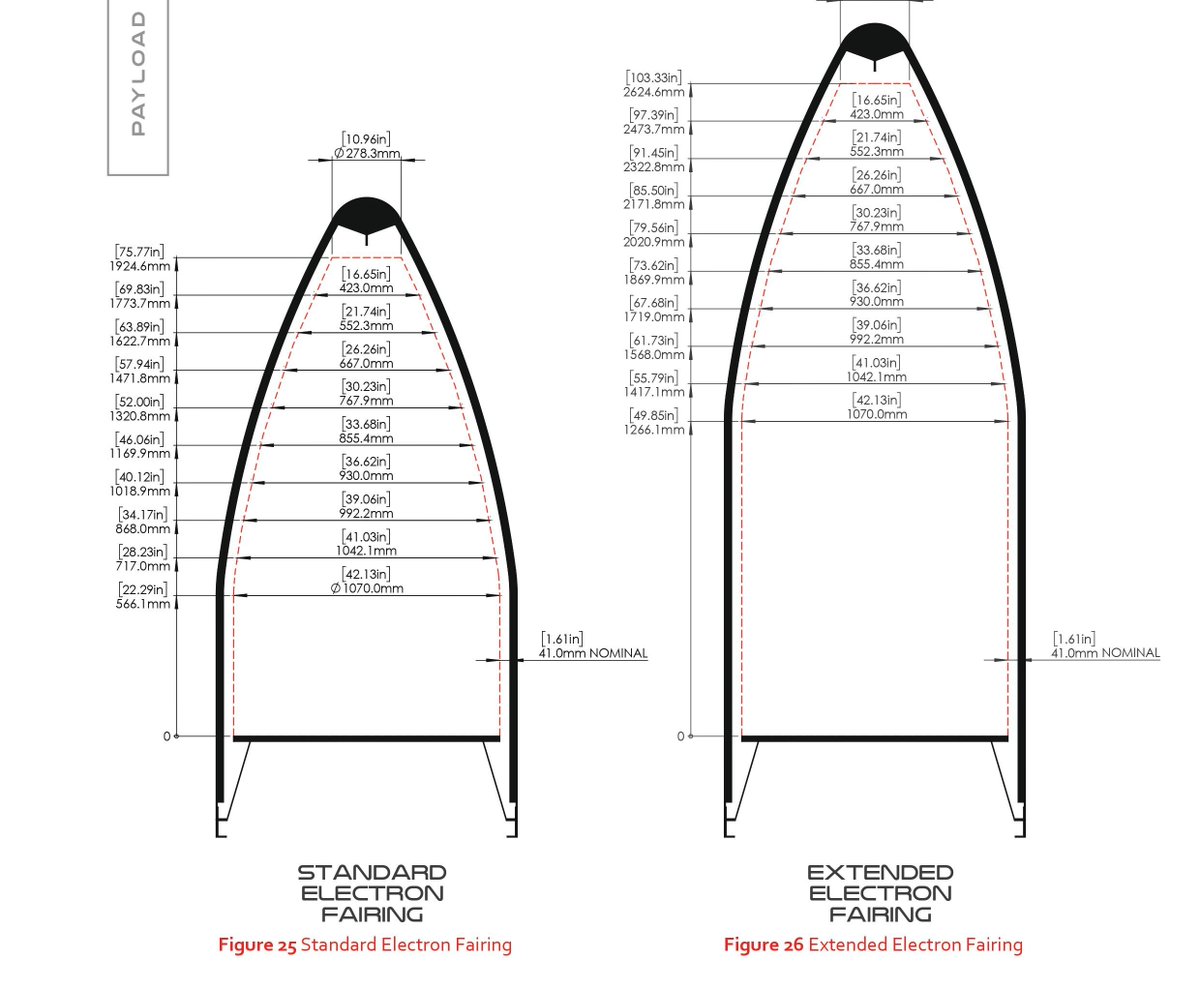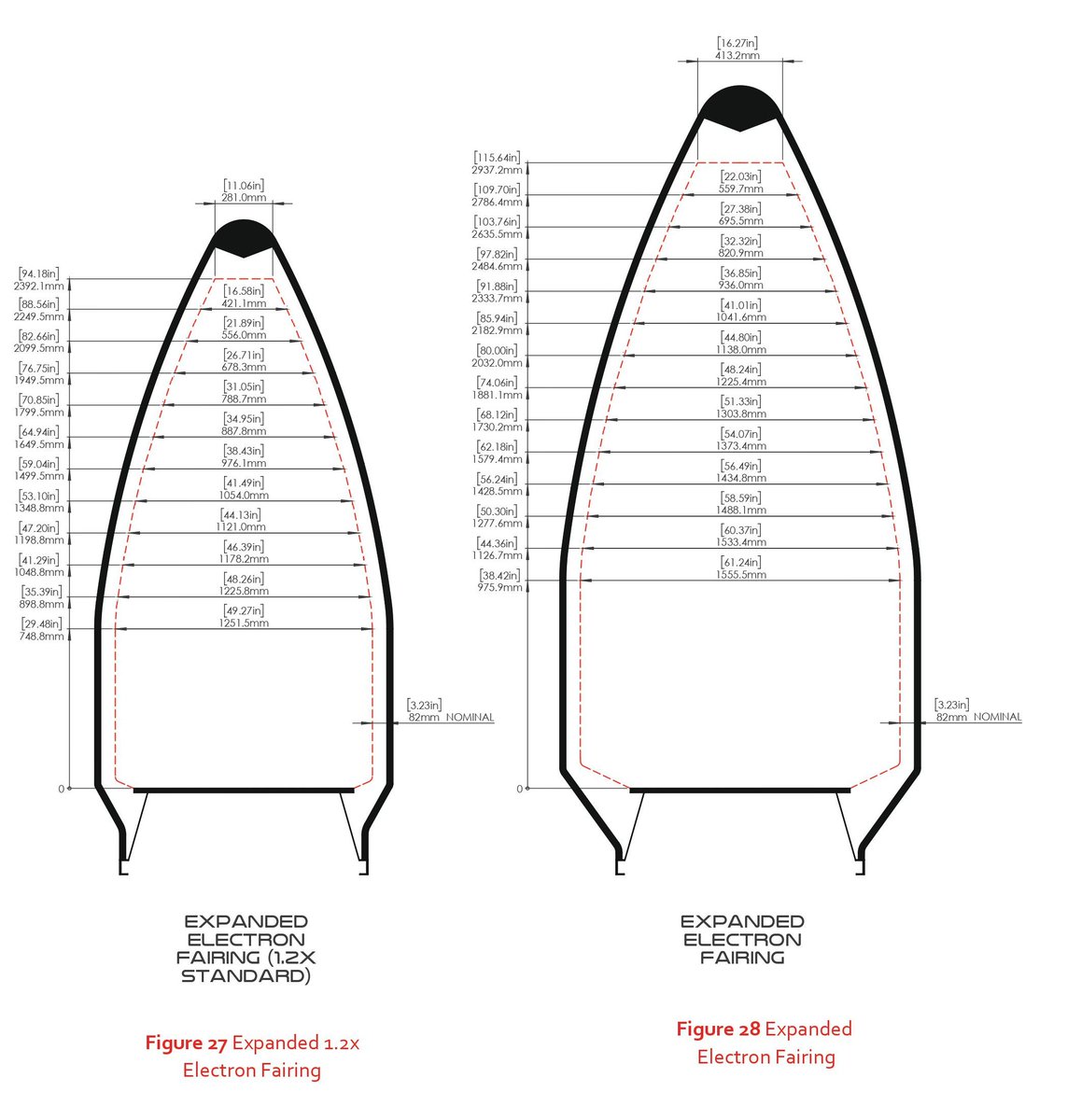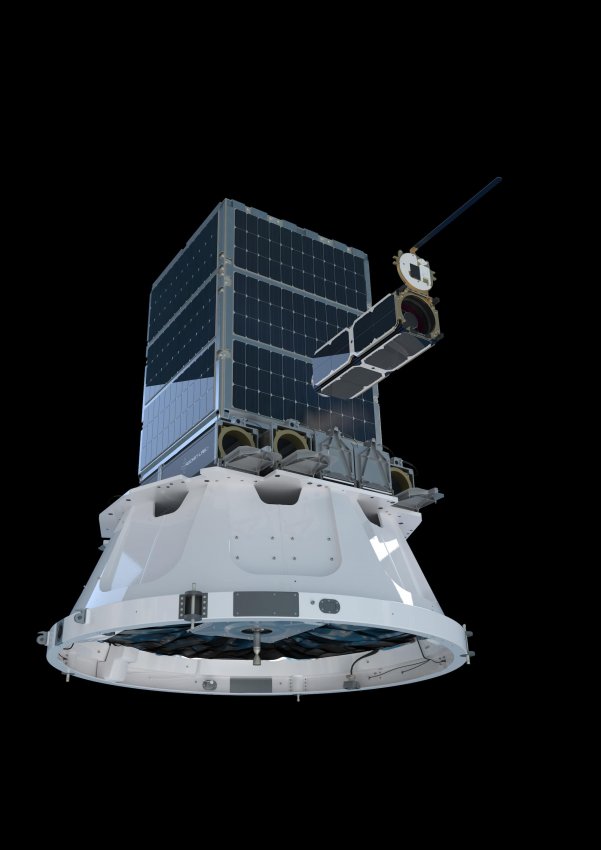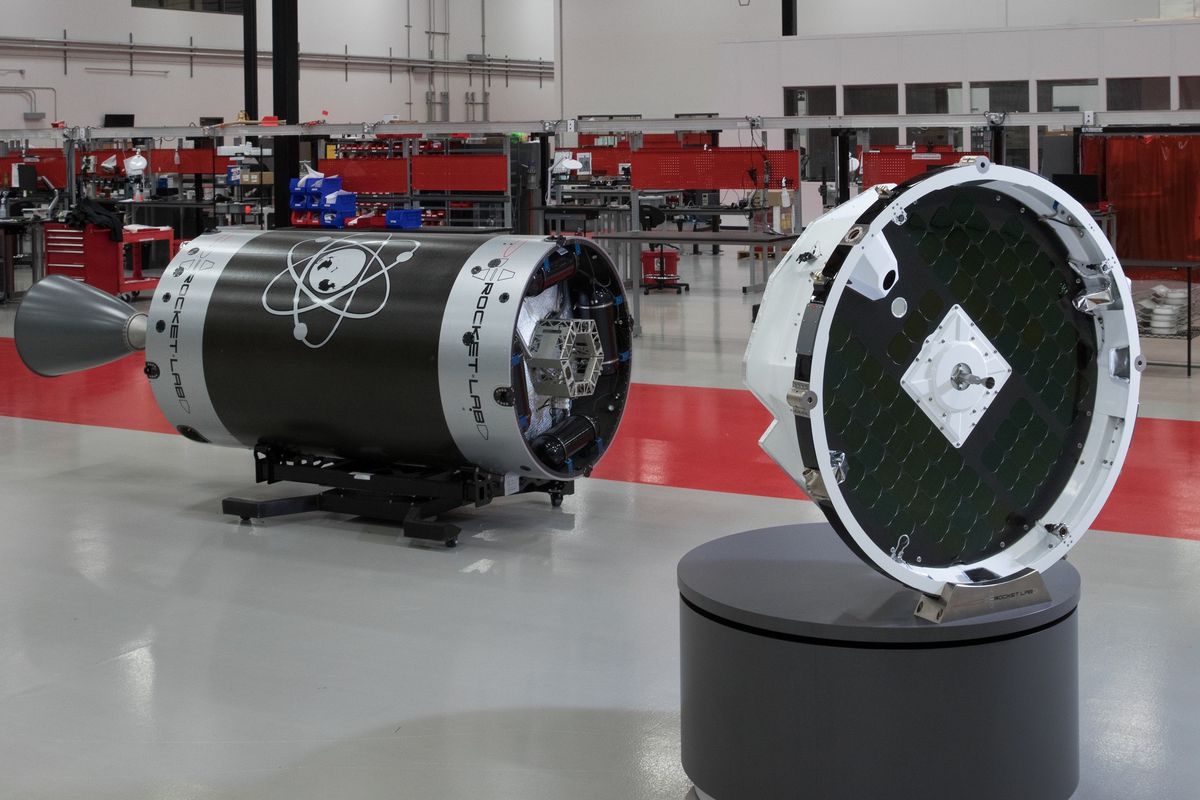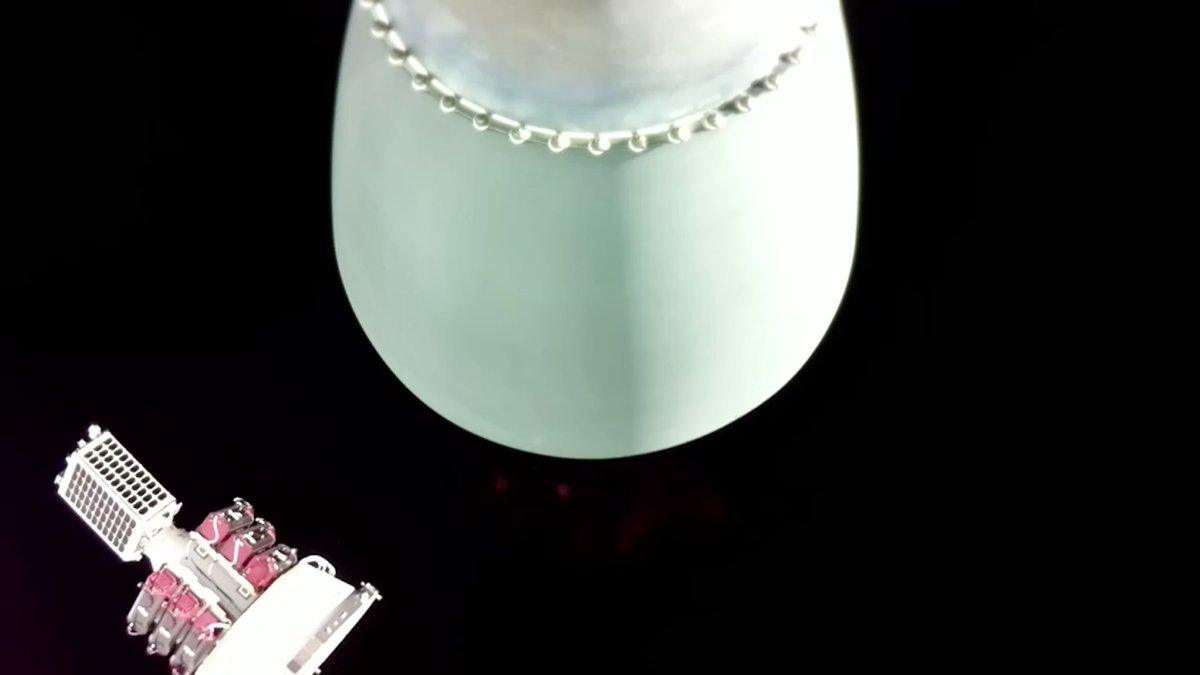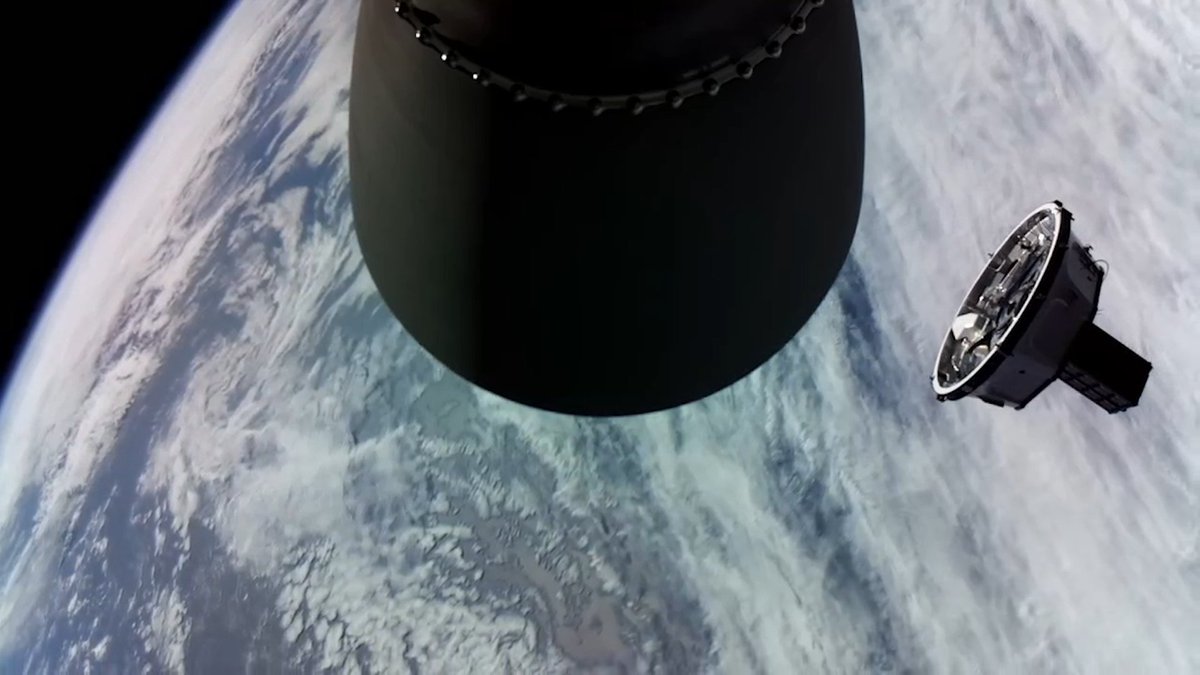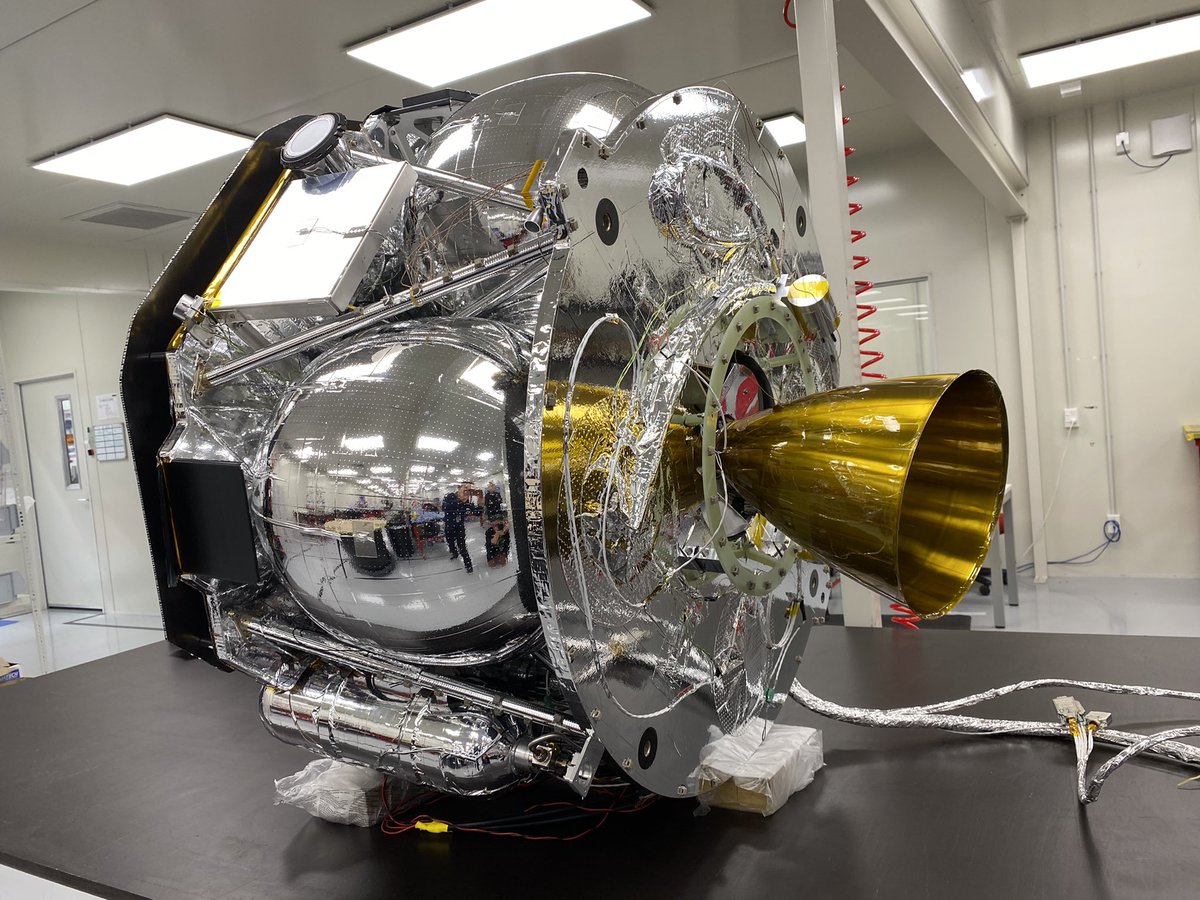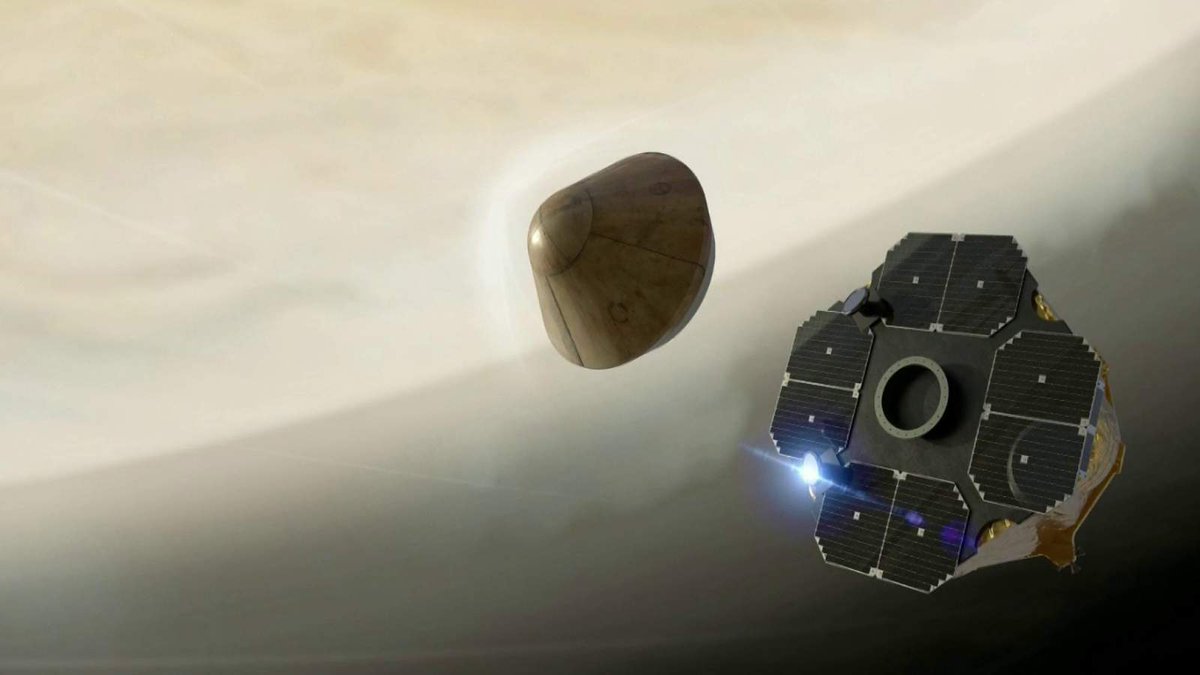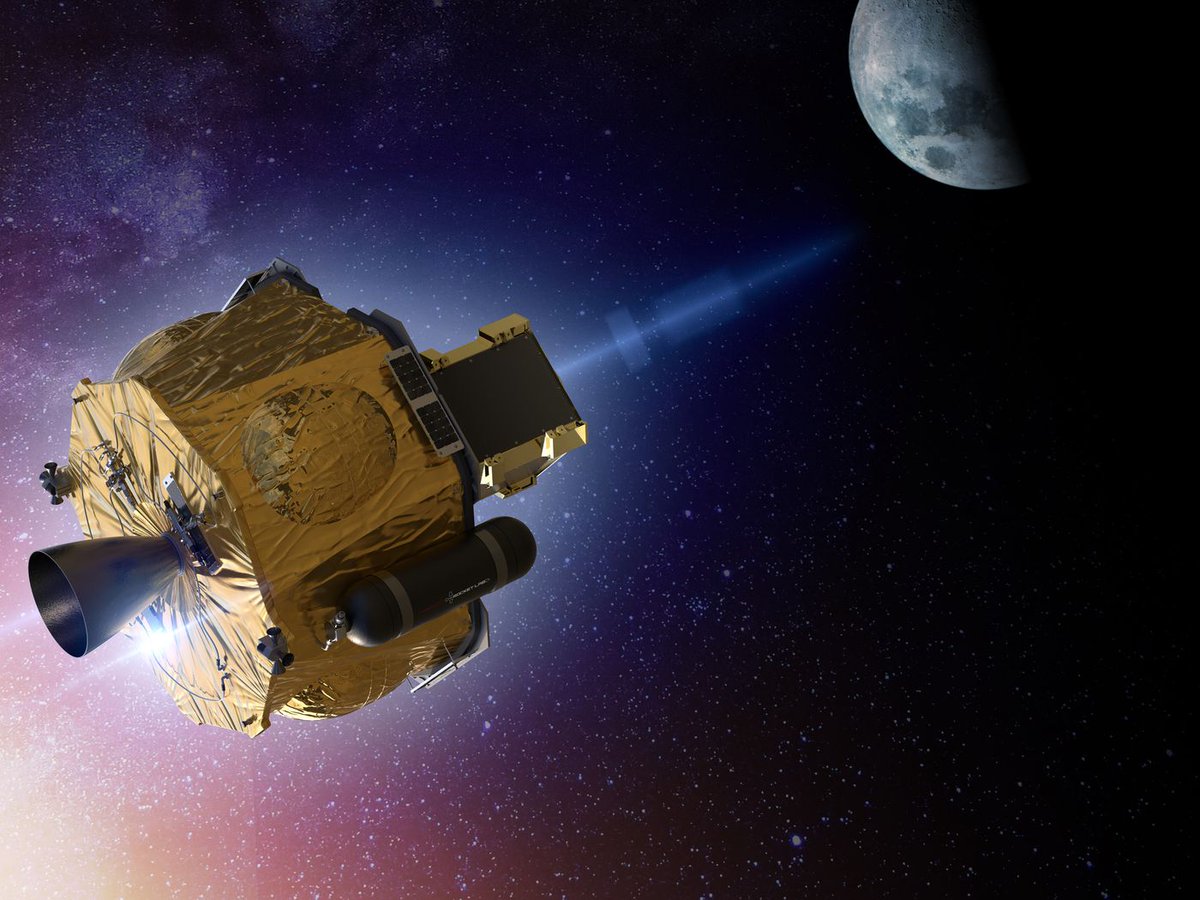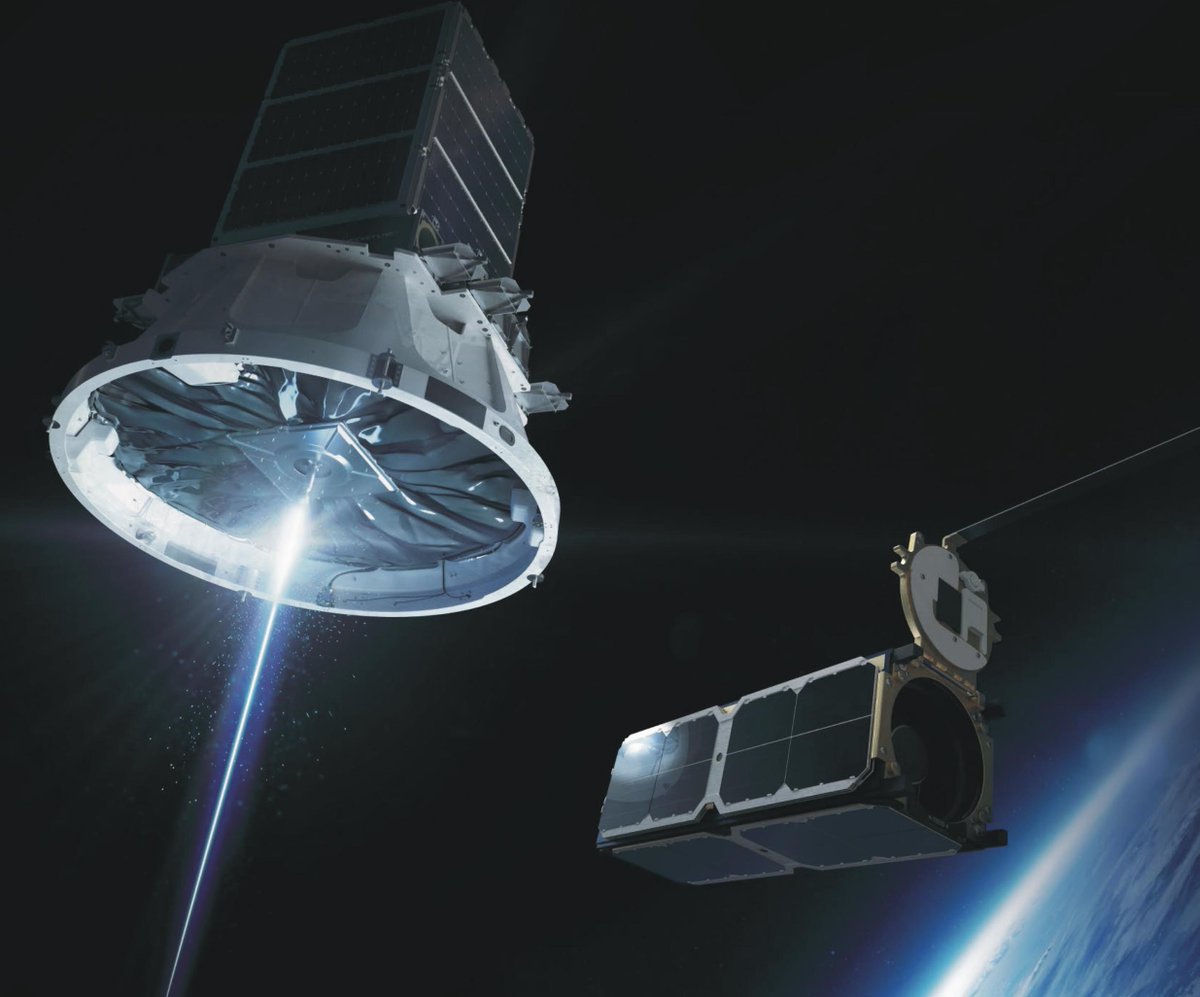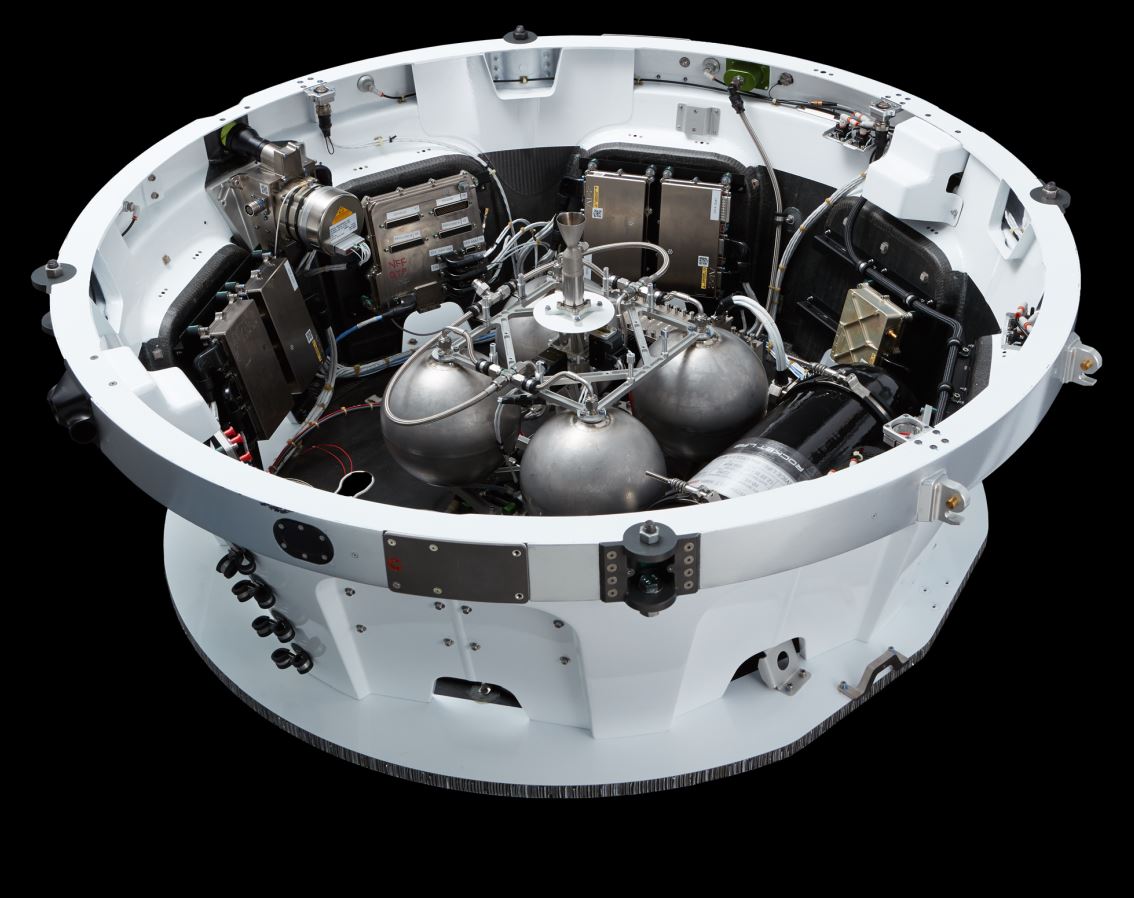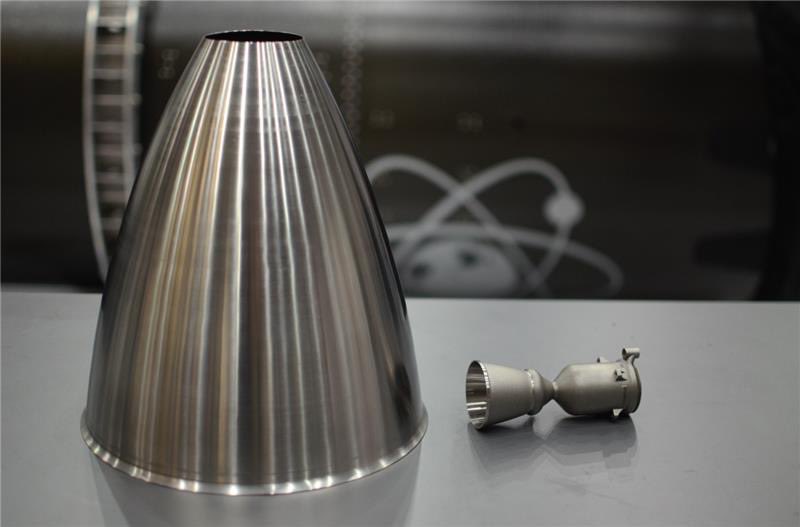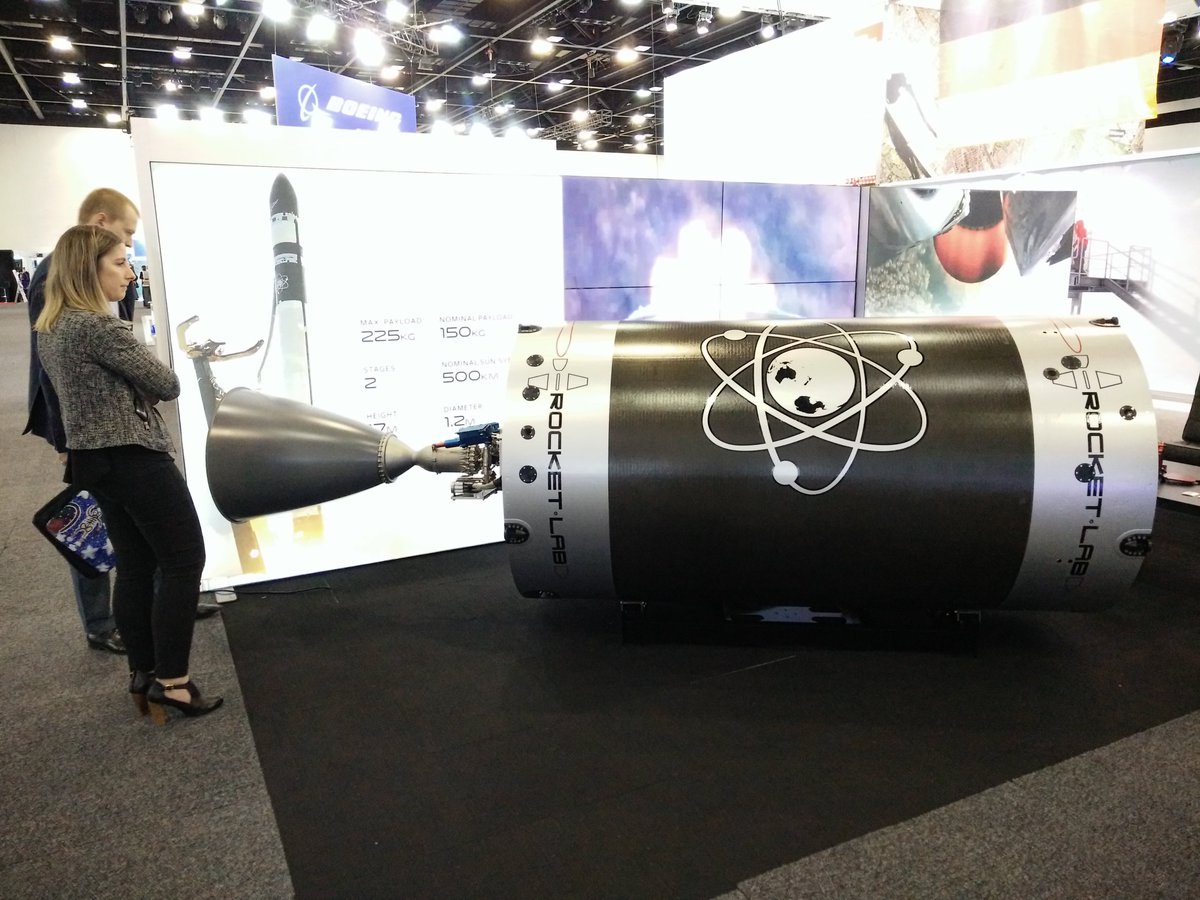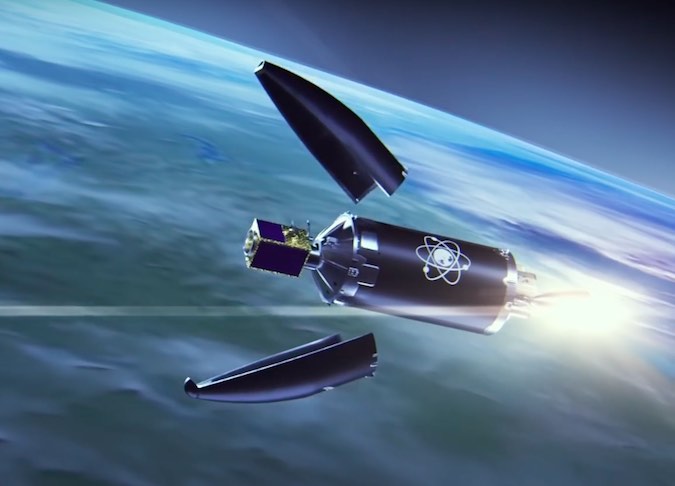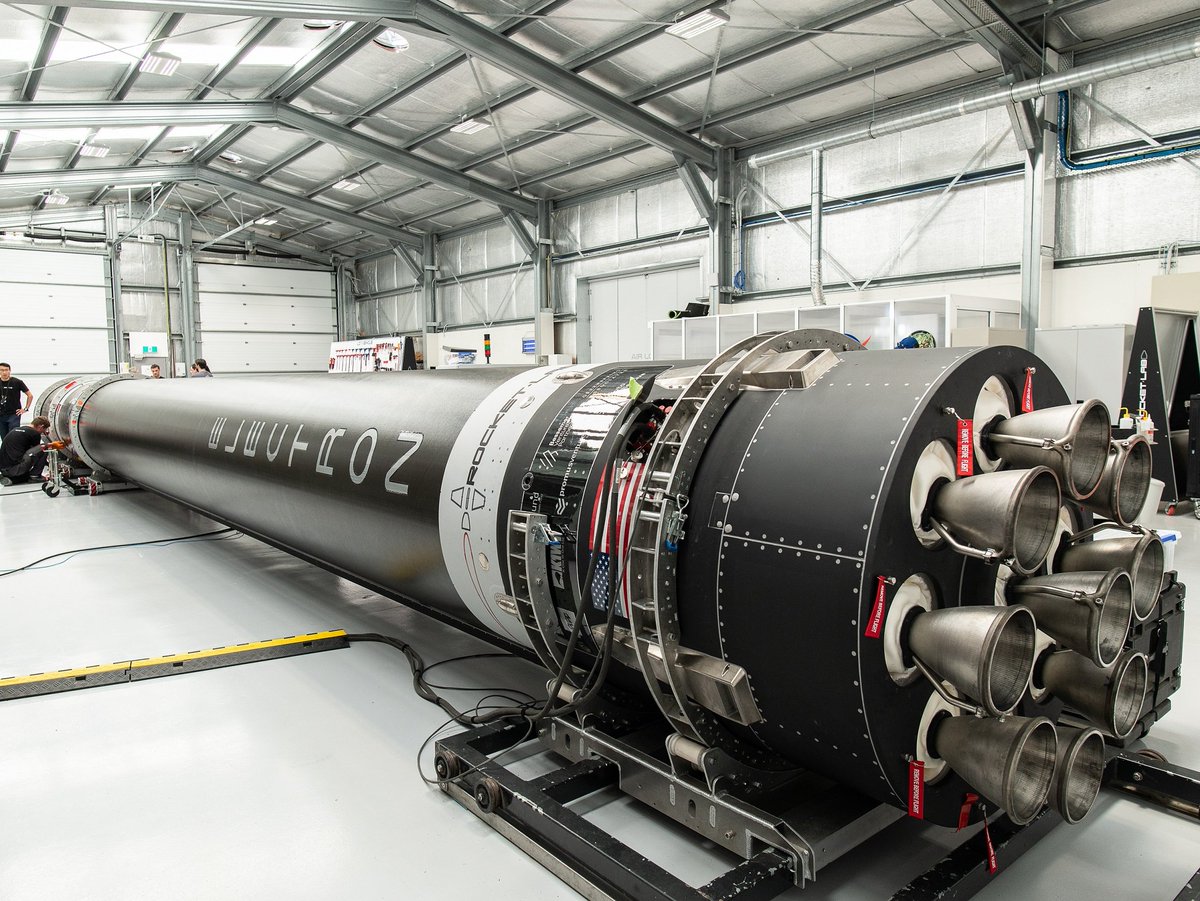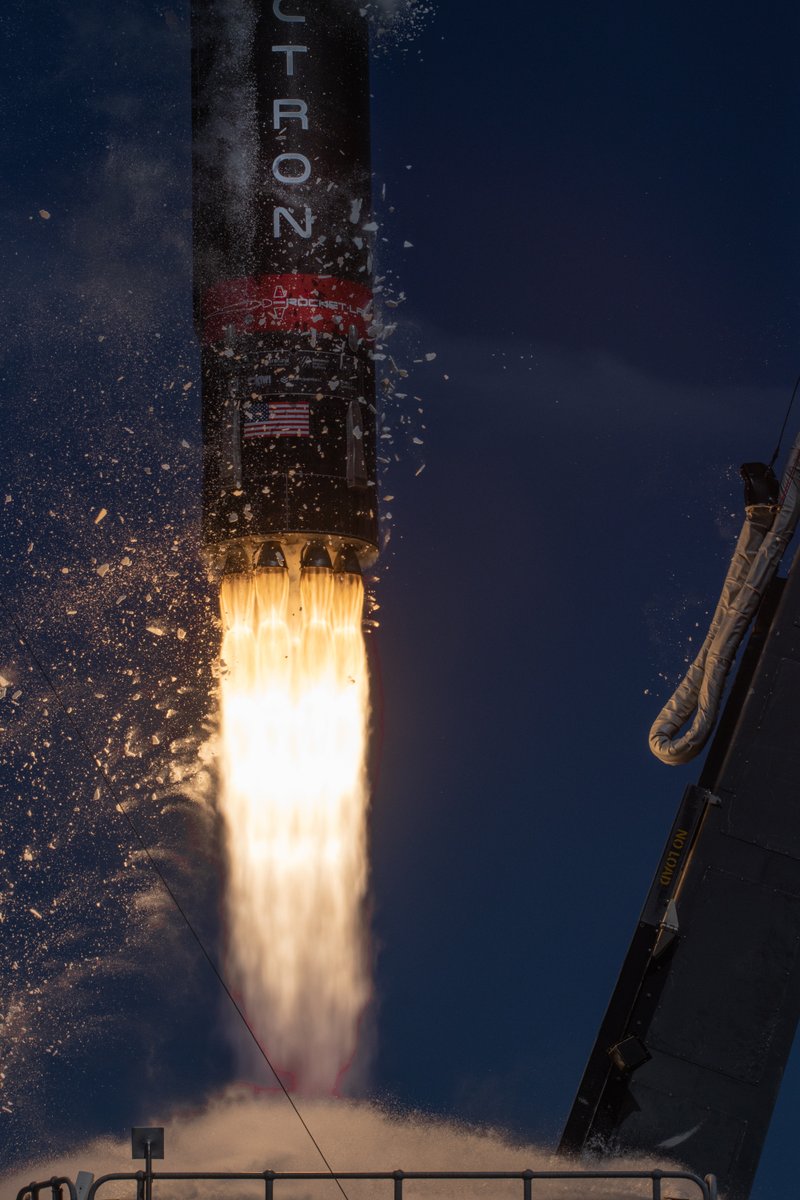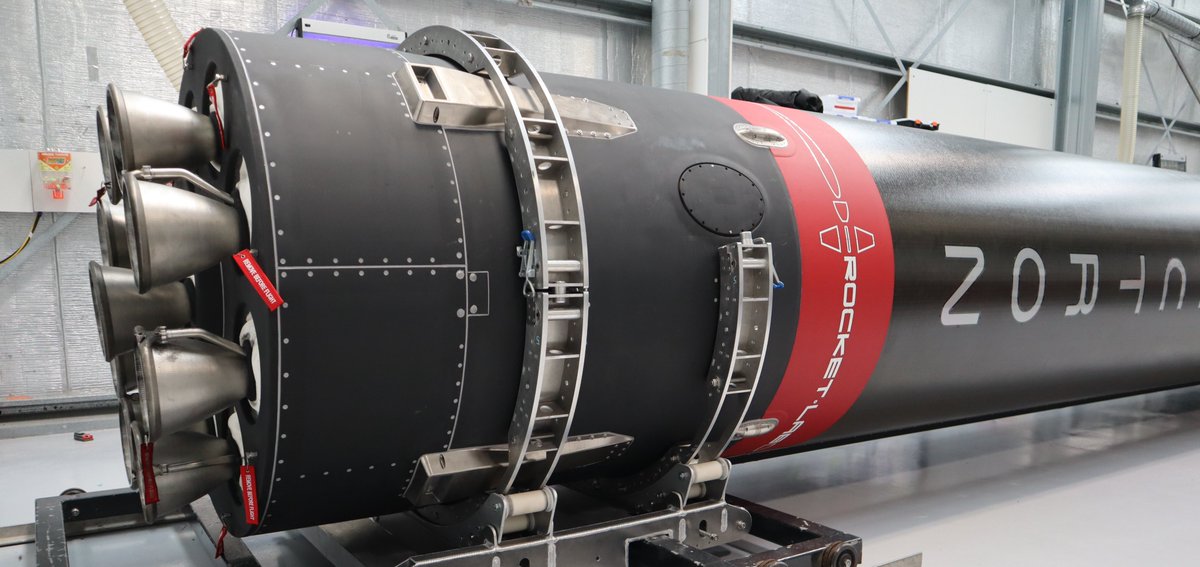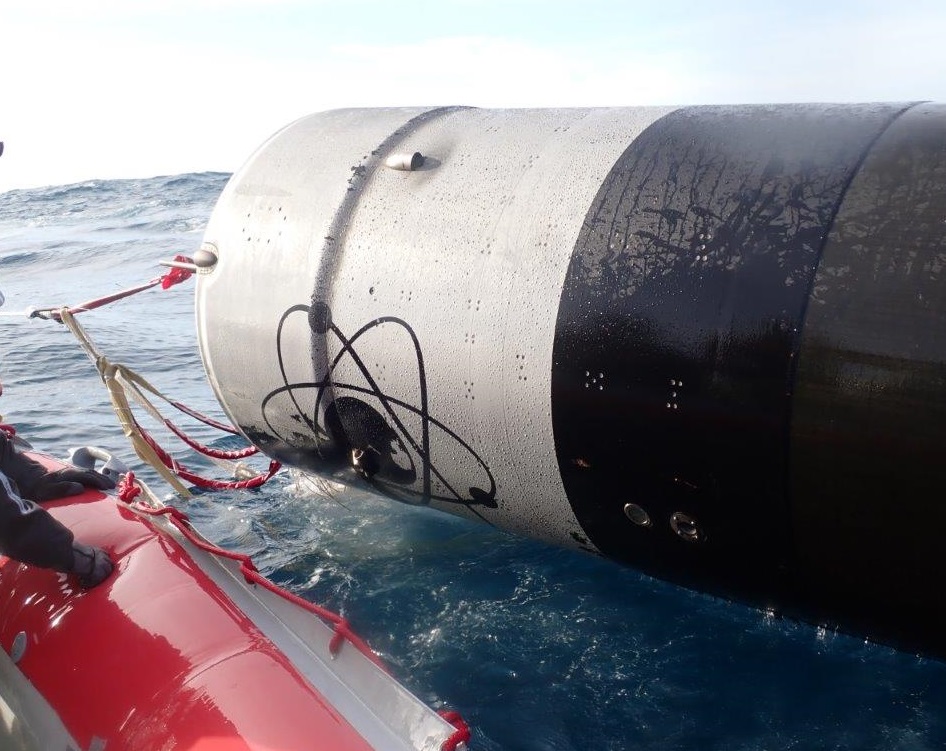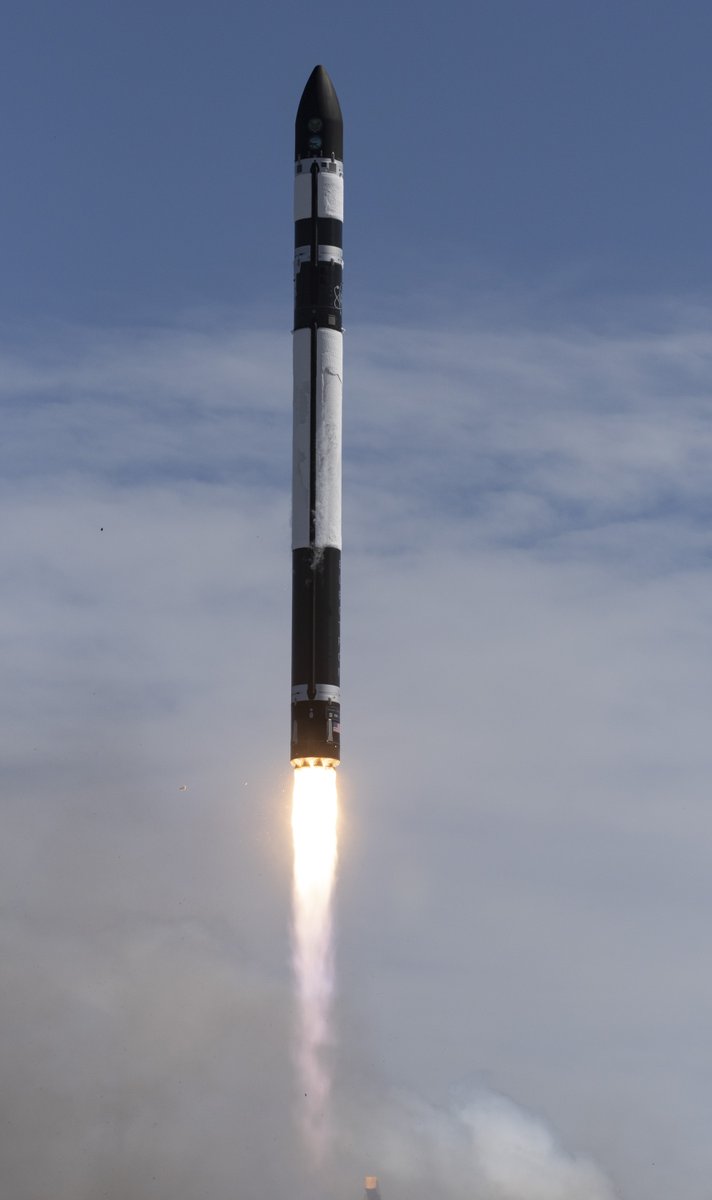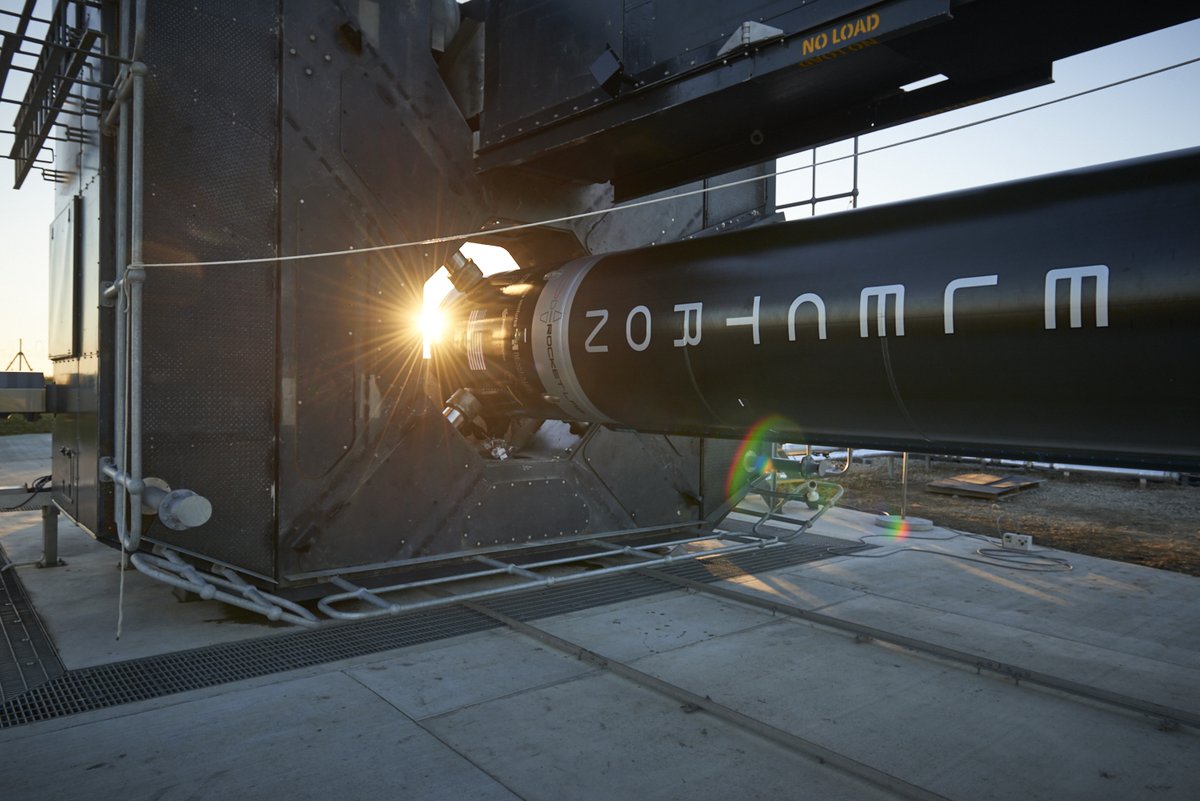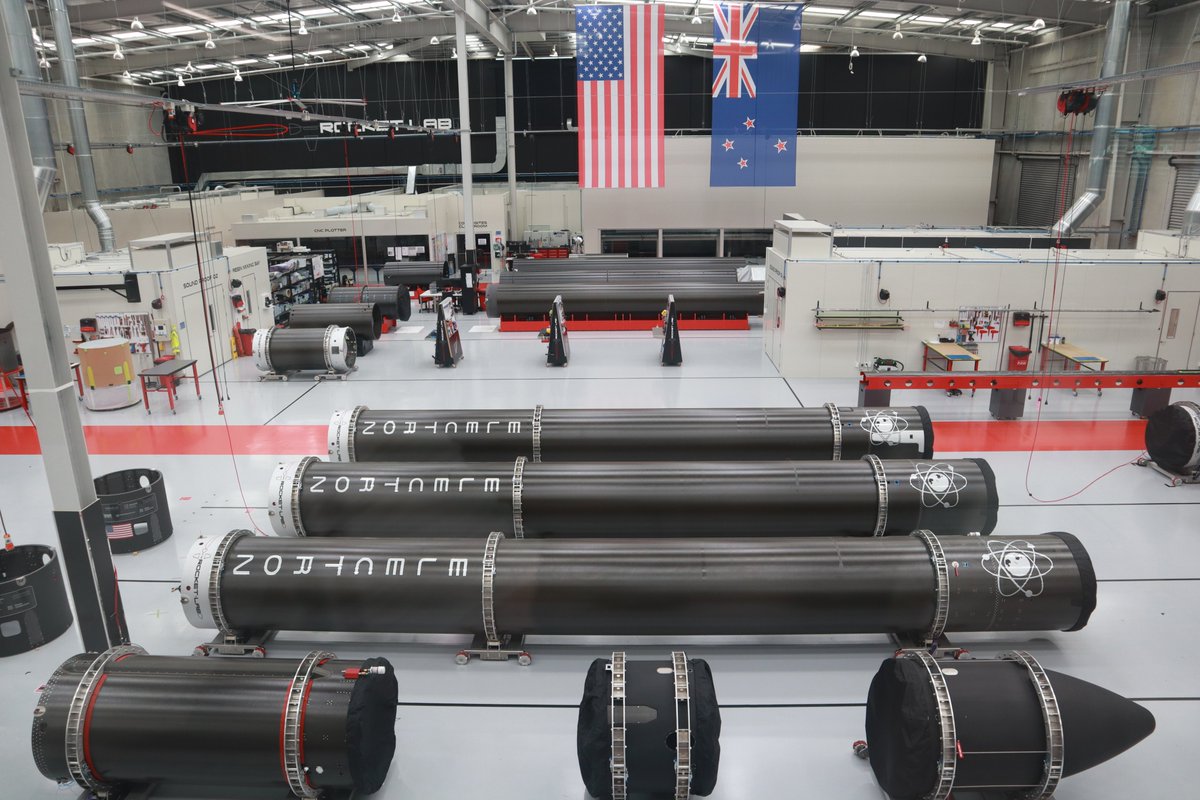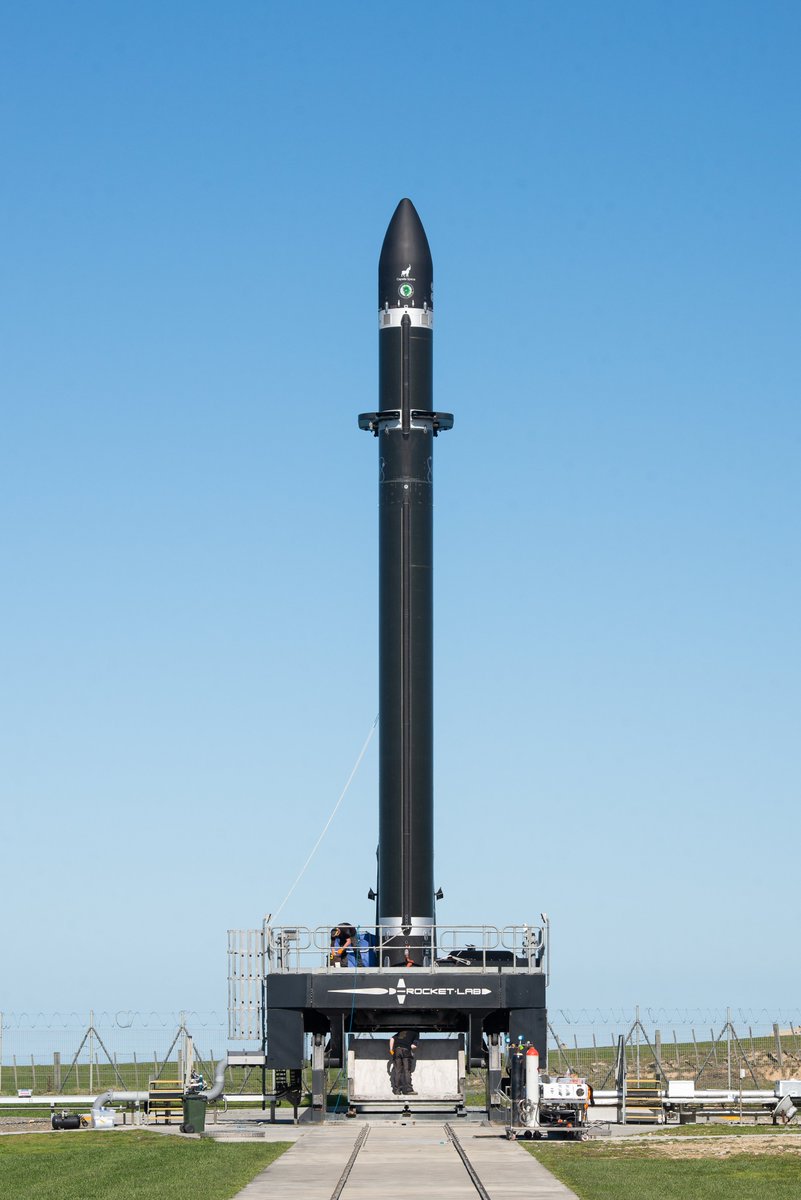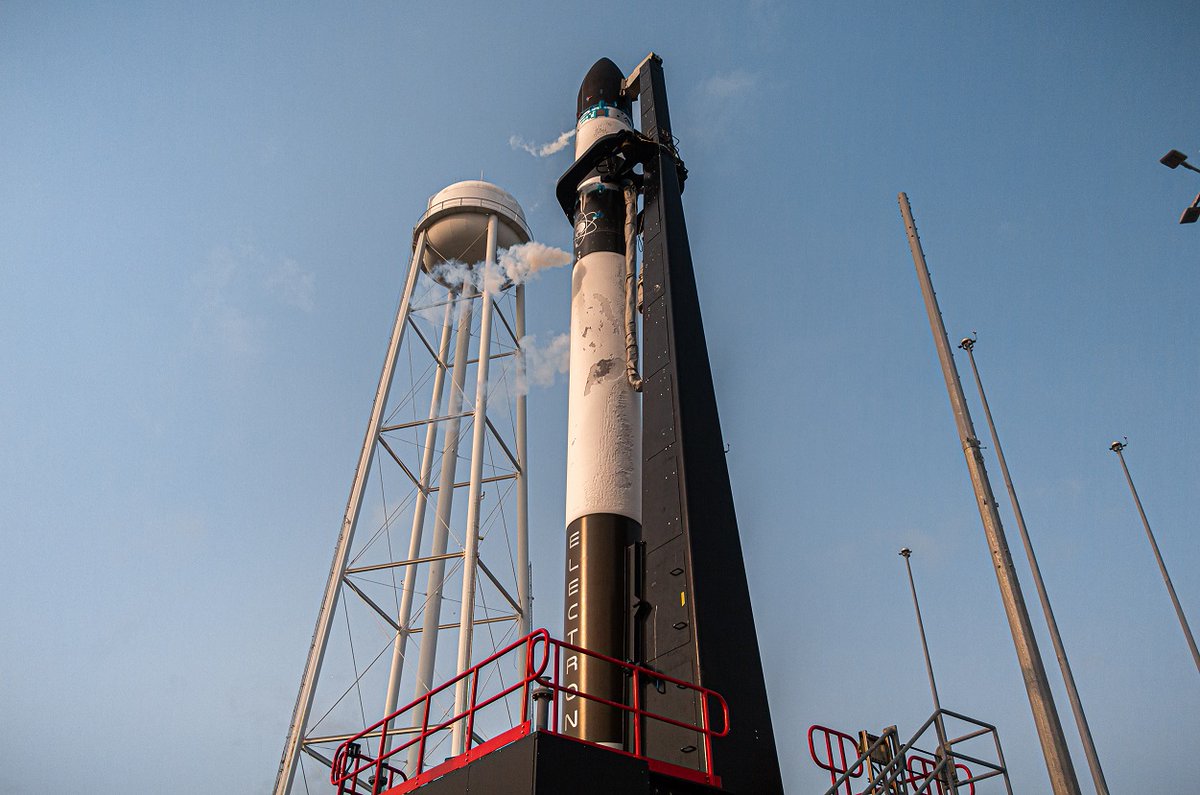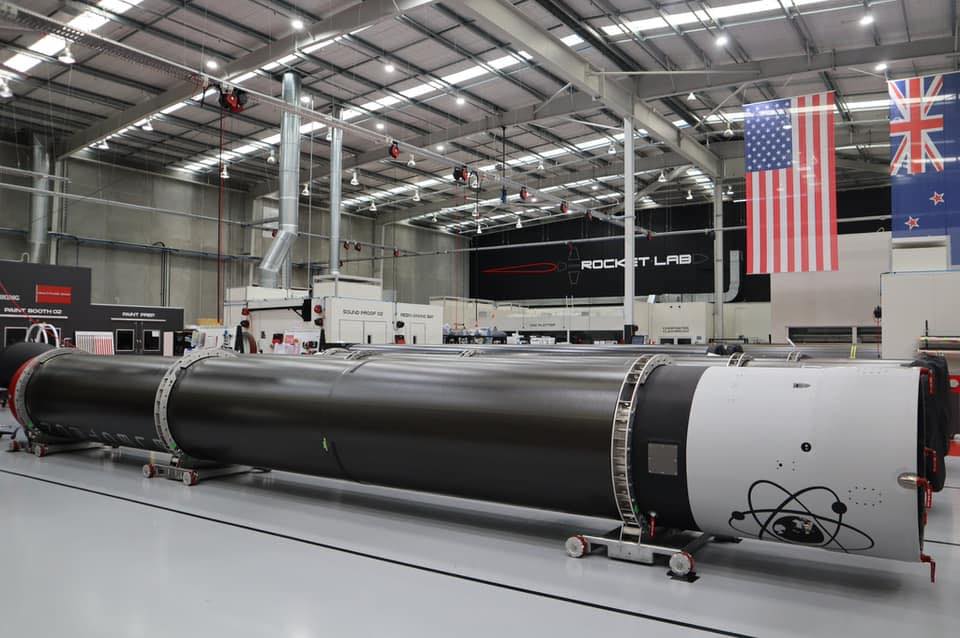Rocket Lab’s Electron rocket:
An overview of everything between the tip of the fairing to the engine nozzles in the thread below! https://abs.twimg.com/emoji/v2/... draggable="false" alt="⬇️" title="Pfeil nach unten" aria-label="Emoji: Pfeil nach unten">
https://abs.twimg.com/emoji/v2/... draggable="false" alt="⬇️" title="Pfeil nach unten" aria-label="Emoji: Pfeil nach unten">
1/15
All credits of the media in this thread go to Rocket Lab
An overview of everything between the tip of the fairing to the engine nozzles in the thread below!
1/15
All credits of the media in this thread go to Rocket Lab
First up: the fairing
These two composite shells protect the spacecraft against atmospheric and acoustic stress and includes an environmental control system. There are four fairing configurations: a slim and a wide fairing, which both can be extended in length.
2/15
These two composite shells protect the spacecraft against atmospheric and acoustic stress and includes an environmental control system. There are four fairing configurations: a slim and a wide fairing, which both can be extended in length.
2/15
Electron’s fairing specifications:
Height: 2.5 meters - 3.3 meters
Width: 1.2 meters - 1.8 meters
Mass: 44 kgs - unknown
Note that these dimensions are estimates made from the known dimensions of the interior. The known dimensions can be read from the photos below.
3/15
Height: 2.5 meters - 3.3 meters
Width: 1.2 meters - 1.8 meters
Mass: 44 kgs - unknown
Note that these dimensions are estimates made from the known dimensions of the interior. The known dimensions can be read from the photos below.
3/15
Next: the kickstage
The kickstage is designed to deliver satellites to precise orbits and eliminates the need for customers to develop their own propulsion and GNC equipment. It uses a Currie engine, 6 RCS thrusters and scalable fuel tanks. For more complex missions…
4/15
The kickstage is designed to deliver satellites to precise orbits and eliminates the need for customers to develop their own propulsion and GNC equipment. It uses a Currie engine, 6 RCS thrusters and scalable fuel tanks. For more complex missions…
4/15
… Rocket Lab developed the Photon satellite bus, a high-performance evolution of the kick stage. This is truly a separate vehicle, so I will dedicate a unique thread to Photon!
5/15
5/15
Kickstage specifications:
Height: 0.4 meters
Width: 1.2 meters
Dry mass: 40 kilograms
Propellant: liquid bi-propellant
Thrust: 120 N
6/15
Height: 0.4 meters
Width: 1.2 meters
Dry mass: 40 kilograms
Propellant: liquid bi-propellant
Thrust: 120 N
6/15
Next up is Electron’s second stage:
The second stage uses a single Rutherford engine with a bigger, vacuum optimized nozzle. This stage has roughly 2000 kilograms of propellant, which can power the engine for about 5 minutes. The engine’s pumps are…
7/15
The second stage uses a single Rutherford engine with a bigger, vacuum optimized nozzle. This stage has roughly 2000 kilograms of propellant, which can power the engine for about 5 minutes. The engine’s pumps are…
7/15
…powered by three batteries of which two are jettisoned after depletion. The third HVB - High Voltage Battery - powers the engine’s LOX and RP-1 pumps for the duration of the burn. The main structure is made from Carbon Composite, just like the first stage.
8/15
8/15
Second stage specifications:
Height: 2.4 meters
Width: 1.2 meters
Dry mass: 0.25 tons (estimate)
Propellant: RP-1/LOX
Thrust: 26 kN
9/15
Height: 2.4 meters
Width: 1.2 meters
Dry mass: 0.25 tons (estimate)
Propellant: RP-1/LOX
Thrust: 26 kN
9/15
Electron’s first stage:
The first stage houses 9 Rutherford engines, which provide a thrust of 162 kN of thrust. This stage is made from carbon composite and is the only reusable part of the launch vehicle. For recovery…
10/15
The first stage houses 9 Rutherford engines, which provide a thrust of 162 kN of thrust. This stage is made from carbon composite and is the only reusable part of the launch vehicle. For recovery…
10/15
… flights, recognizable with the red markings, the first stage houses a more capable heat shield, RCS pods and parachutes. The plan is to catch the stage with a helicopter when it’s under a parachute. Multiple recovery tests have been completed successfully so far!
11/15
11/15
First stage specifications:
Height: 12.1 meters
Width: 1.2 meters
Dry mass: 0.95 tons (estimate)
Propellant: RP-1/LOX
Thrust: 190 - 224 kN
12/15
Height: 12.1 meters
Width: 1.2 meters
Dry mass: 0.95 tons (estimate)
Propellant: RP-1/LOX
Thrust: 190 - 224 kN
12/15
Electron:
Electron is Rocket Lab’s first launch vehicle and has a height of 18 meters. It’s mostly made from carbon composite, which decreases its mass by 40% to a wet mass of 13 tons. The vehicle is powered by in-house designed and produced Rutherford engines, which...
13/15
Electron is Rocket Lab’s first launch vehicle and has a height of 18 meters. It’s mostly made from carbon composite, which decreases its mass by 40% to a wet mass of 13 tons. The vehicle is powered by in-house designed and produced Rutherford engines, which...
13/15
… can carry 300 kilograms into orbit. The vehicle and supporting infrastructure is made for frequent access to space. This high launch frequency can be expanded even further by reusing the first stage, eliminating production time!
14/15
14/15
Want to know more? Ask your question or watch the videos below!
Video on launch and recovery (1:40):
https://youtu.be/enndCzvZpZk ">https://youtu.be/enndCzvZp...
Video of stage separation (0.33):
https://youtu.be/Vpsfy4npMhY ">https://youtu.be/Vpsfy4npM...
A look inside Electron& #39;s factory by @Erdayastronaut (08:09):
https://youtu.be/-VGZ8DGkiyc ">https://youtu.be/-VGZ8DGki...
15/15
Video on launch and recovery (1:40):
https://youtu.be/enndCzvZpZk ">https://youtu.be/enndCzvZp...
Video of stage separation (0.33):
https://youtu.be/Vpsfy4npMhY ">https://youtu.be/Vpsfy4npM...
A look inside Electron& #39;s factory by @Erdayastronaut (08:09):
https://youtu.be/-VGZ8DGkiyc ">https://youtu.be/-VGZ8DGki...
15/15

 Read on Twitter
Read on Twitter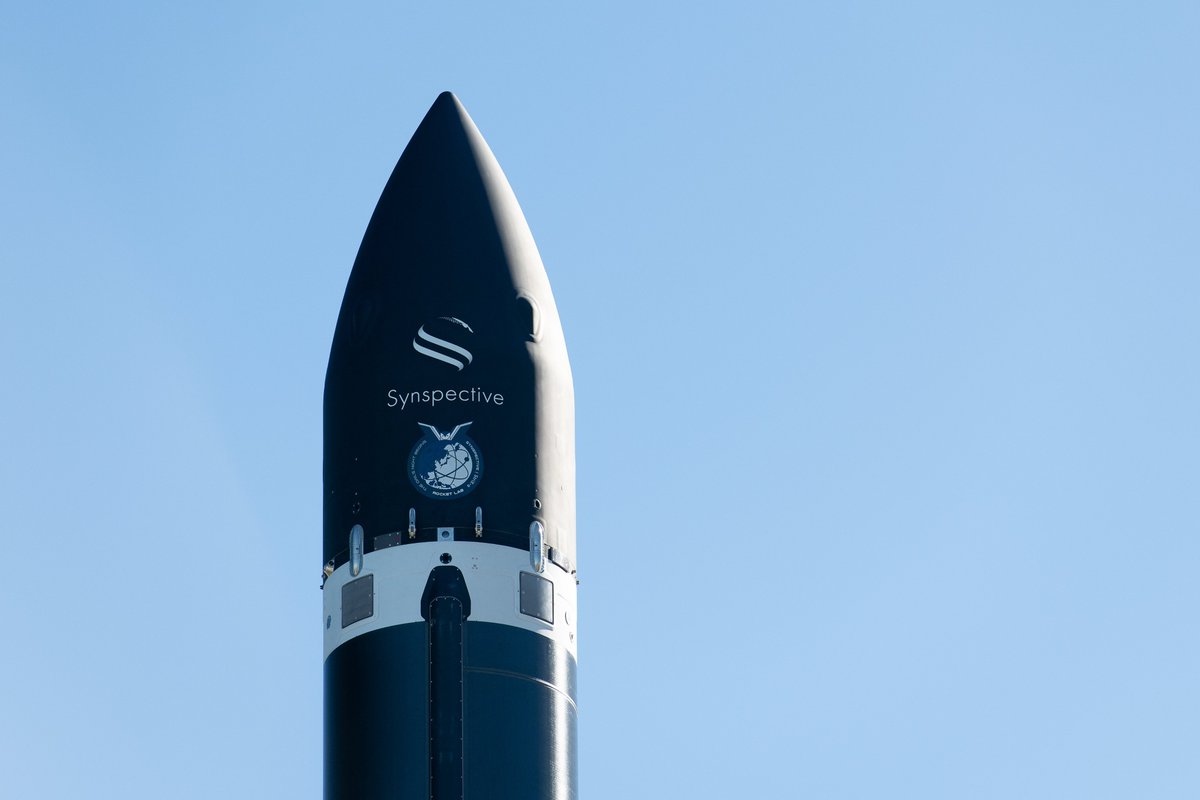 1/15All credits of the media in this thread go to Rocket Lab" title="Rocket Lab’s Electron rocket: An overview of everything between the tip of the fairing to the engine nozzles in the thread below! https://abs.twimg.com/emoji/v2/... draggable="false" alt="⬇️" title="Pfeil nach unten" aria-label="Emoji: Pfeil nach unten">1/15All credits of the media in this thread go to Rocket Lab">
1/15All credits of the media in this thread go to Rocket Lab" title="Rocket Lab’s Electron rocket: An overview of everything between the tip of the fairing to the engine nozzles in the thread below! https://abs.twimg.com/emoji/v2/... draggable="false" alt="⬇️" title="Pfeil nach unten" aria-label="Emoji: Pfeil nach unten">1/15All credits of the media in this thread go to Rocket Lab">
 1/15All credits of the media in this thread go to Rocket Lab" title="Rocket Lab’s Electron rocket: An overview of everything between the tip of the fairing to the engine nozzles in the thread below! https://abs.twimg.com/emoji/v2/... draggable="false" alt="⬇️" title="Pfeil nach unten" aria-label="Emoji: Pfeil nach unten">1/15All credits of the media in this thread go to Rocket Lab">
1/15All credits of the media in this thread go to Rocket Lab" title="Rocket Lab’s Electron rocket: An overview of everything between the tip of the fairing to the engine nozzles in the thread below! https://abs.twimg.com/emoji/v2/... draggable="false" alt="⬇️" title="Pfeil nach unten" aria-label="Emoji: Pfeil nach unten">1/15All credits of the media in this thread go to Rocket Lab">
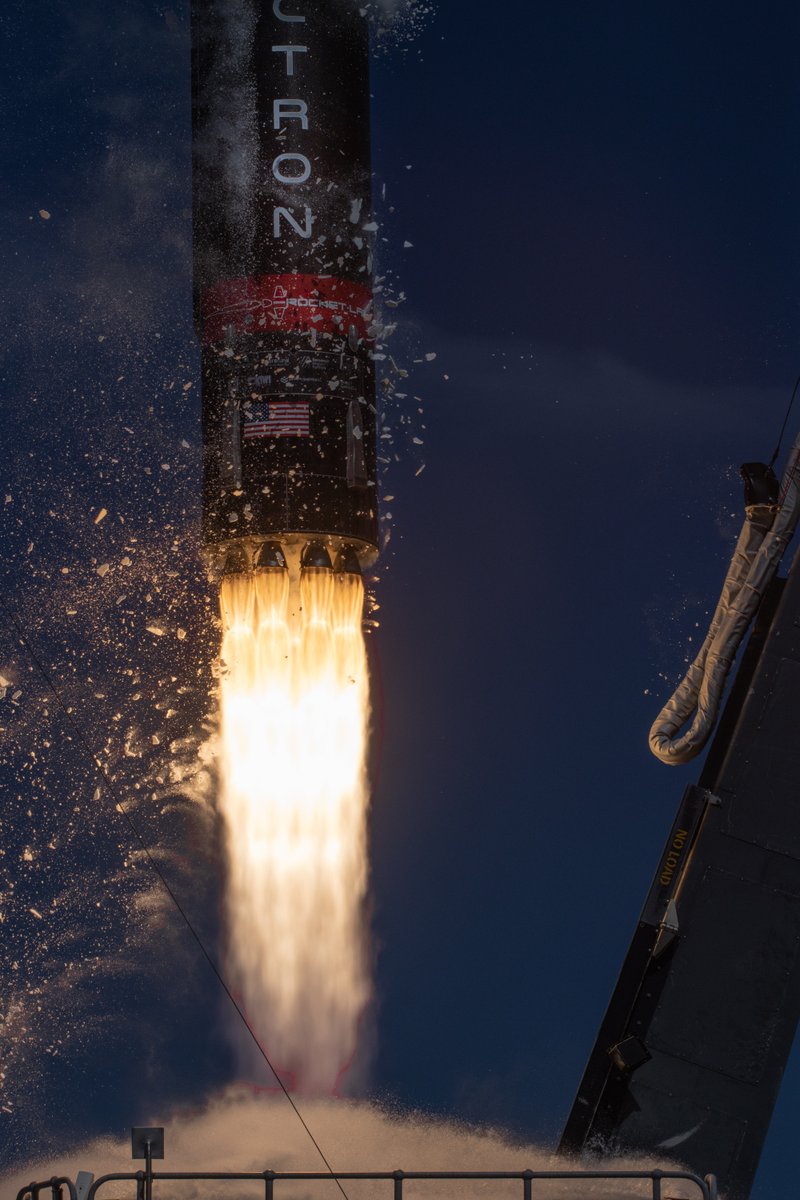 1/15All credits of the media in this thread go to Rocket Lab" title="Rocket Lab’s Electron rocket: An overview of everything between the tip of the fairing to the engine nozzles in the thread below! https://abs.twimg.com/emoji/v2/... draggable="false" alt="⬇️" title="Pfeil nach unten" aria-label="Emoji: Pfeil nach unten">1/15All credits of the media in this thread go to Rocket Lab">
1/15All credits of the media in this thread go to Rocket Lab" title="Rocket Lab’s Electron rocket: An overview of everything between the tip of the fairing to the engine nozzles in the thread below! https://abs.twimg.com/emoji/v2/... draggable="false" alt="⬇️" title="Pfeil nach unten" aria-label="Emoji: Pfeil nach unten">1/15All credits of the media in this thread go to Rocket Lab">
 1/15All credits of the media in this thread go to Rocket Lab" title="Rocket Lab’s Electron rocket: An overview of everything between the tip of the fairing to the engine nozzles in the thread below! https://abs.twimg.com/emoji/v2/... draggable="false" alt="⬇️" title="Pfeil nach unten" aria-label="Emoji: Pfeil nach unten">1/15All credits of the media in this thread go to Rocket Lab">
1/15All credits of the media in this thread go to Rocket Lab" title="Rocket Lab’s Electron rocket: An overview of everything between the tip of the fairing to the engine nozzles in the thread below! https://abs.twimg.com/emoji/v2/... draggable="false" alt="⬇️" title="Pfeil nach unten" aria-label="Emoji: Pfeil nach unten">1/15All credits of the media in this thread go to Rocket Lab">
